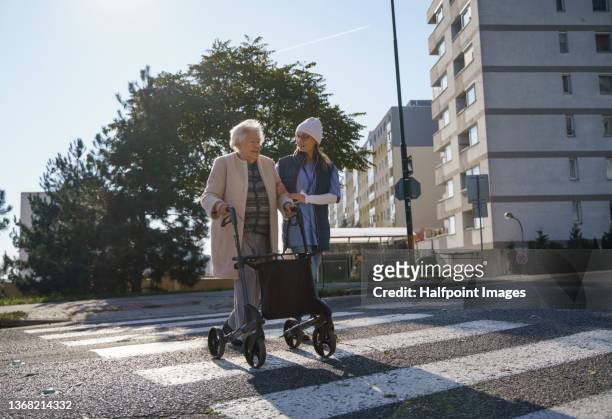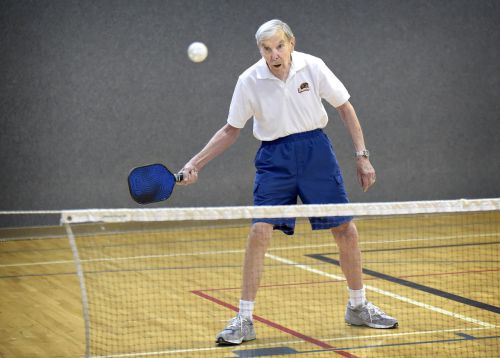6
Section One: The Fundamentals
A) Keywords
Exercise 1:
Provide a brief definition of one of the padlet keywords for this week.
|
Elizabeth Pike defines the third age as a section of ages after retirement, where individuals are still able to partake in activities, have a social life, contribute to society, and are still in good health. This is one of two sections post-retirement with the other being fourth age, and could also be referred to as a person’s golden years.
|
B) The Social Significance of Aging in Sport
Exercise 2: Notebook Prompt
How is old age popularly represented today? Find an image online that you think exemplifies one defining attitude towards old age and paste in your notebook below with a brief explanation of what this image means to you.

Today, older aged individuals are typically associated with being weak and frail. The image given includes an older individual being assisted across the road. This is a typical depiction seen, but I am having a hard time deciphering where it originates from in my mind, whether that be TV, movies, or books as a child. This place into the attitude and representation of individuals where these images are engrained into our head from an early age. Personally, I believe it could be considered more of a stereotype of age, believing that individuals are unable to perform tasks without younger individuals. Well, this might be the case for some people, it does not necessarily apply to the entirety of the elder population. |
Exercise 3: Notebook Prompt
What does the article (referencing another study by Dionigi) mean by its statement that sport can help aging people to simultaneously “accept and resist the ageing process” (572)? Respond by audio or text and find paste two images sourced online into your notebook showing how sport might help aging people to both accept and resist the aging process.
|
When the article mentions that the sports help the ageing population accept and resist ageing process it can be broken down two parts. The first involves resistance, and is meant as sports being a channel to be physically active. This allows these individuals to go against the stereotype of being frail and weak leading to resistance of the ageing process such as image one. In terms of acceptance, it can be generally understood that their performance in these activities will decrease overtime. With that being said, the slow decline in these activities over a duration allows for acceptance of the ageing process such as switching to golf cart use in golf.
|
Exercise 4: Notebook Prompt
Who are the groups less likely to have extensive opportunities to take part in sports, according to Pike? How does privilege factor into aging and sport? (200 words max)
|
Many groups are likely to experience, uneven opportunities in terms of taking part in sports. There are three major groups that can be associated with this, including – strength factors, privileged factors, and cultural capital. The first two include – the disabled population, the weaker population, and their classification of “strength”. These individuals have a harder time accessing sports. Similar to previous modules, these populations have a difficult time accessing sports at points of good health, let alone with increased age. Knowing this, I believe there’s a disconnect between the population, and the amount of opportunity presented to these individuals to play sports. Other significant group includes ethnic groups and can lower socioeconomic groups associated with privilege. These groups whether race based or financial based create limitations and opportunity for physical activity, and again are greater with increased age beyond the basic barriers, even at a younger age. Beyond this cultural capital also plays a large role in these populations leading to less opportunities. These can include factors such as education or social connections that lead to uneven opportunities and playing fields. |
Exercise 5: Padlet Discussion
Why do you think age discrimination is “reported more than any form of prejudice” with older people presented as a threat to social values and interests? Feel welcome to use video in your responses. Paste your comments (or transcript of your video) below!
|
I believe that discrimination is reported more than any form of prejudice with older people because of how older age individuals are presented as threats to social values and interests. The topic of sport is typically tied to fast pace, energy, and youthfulness as seen with numerous ads encouraging kids to play, especially on TV when I was a child. In contrast, typical stereotypes associated with older age such as being frail or weak do not fit into people’s expectations of sport leading to this discrimination factor. Older people could often also be viewed as old timely with very different views than the younger population, creating a disconnect. While this is not true, it is an accusation made by younger people and could be a significant divide as well. Even with publications today, you can look at most inclusion ads to find they will cover factors such as a race, disabilities, and gender, with the age being the odd one out. |
B) Older Women and Sport
Exercise 6: Notebook Prompt
What differences do you see in these ads? Which one is more inclusive? How is age represented or not represented in each? Answer these questions in your notebook.
|
With the exclusion of age, the Nike ad could be considered more inclusive. It included representation from various ethnicities, disabilities, genders, and sports all coming together for the message, you can’t stop sports. Comparatively looking at the ‘this can girl’ can ad, he covers most of the bases with the exclusion of gender and disabilities, which is the major difference between the two. This puts me on the fence, especially looking back to previous modules. On one hand, the promotion of female sports was a large topic in terms of inclusion and representation, but on the other hand sports without borders and gender free sports was also a large topic in terms of inclusion. For these reasons I believe the Nike ad could be considered more inclusive. Generally speaking, there isn’t much representation of age in the ads. Which seems to be a large gap when speaking on inclusivity for both the ads.
|
Exercise 7: Notebook Prompt
In her article, “Assessing the sociology of sport: On age and ability,” Elizabeth Pike references a “trend towards a ‘feminisation of ageing’, with many women living longer than men” (573). Do you agree that aging has been “feminized” in this way? How? Answer these questions in your notebook.
|
Feminisation of ageing is difficult topic to understand. From what I’ve gathered, I believe the issue that they’re trying to outline involves how even though they live longer, they are still shackled to acting as caregiving. Furthermore, even with more females given this statistic, they are still seen in the caregiving role as an expectation, well, men are able to proceed with what they would like to do until death. Ultimately, I do agree that ageing has been feminized in the way.
|
Section Three: Module Mini Assignment
|
From my understanding, I believe that the problem surrounds the replacement of green spaces associated with physically activity in the younger population for development of a space for the older population to be physically active, which should be placed elsewhere. There’s a tendency that older Pickleball athletes and advocates are generally not represented at all in these media discussions. None of the articles published – Gobal news, Narwhal, or Arthur, contain conversations with the older population, whom are a part of the user demographic for this park renovation. I do believe that ageism is a factor in these representations, or more of a lack of representation. It could be argued that like previous notebook responses this group of individuals could be considered frail, weak, and not a part of the key demographic associated with the changes. The Arthur article especially drives this home with a comment stating that local elderly residents across the street will wonder where all the grass went, acting as if they are oblivious and confused (Cullingham, 2025). In the other two articles from global news and the narwhal, opinions are shared from local residents voicing opposition for the proposed fields. These voices commented primarily on the small parking lot associated with the courts and ability for children to use the space (Cullingham, 2025; Davis & Lothian, 2024). I argue that the addition to a parking lot acts as way for individuals outside of the immediate neighbourhood to actually use the park and effectively increasing its use per area. The neoliberal agenda comes from the city itself rather than the local residents. The idea of neoliberalism surrounds older populations, participating in productive activities that help reduce impact on health, the economy and social services (Pike, 2015). While these courts are act as a key component for this agenda and allows older populations in the city to be physically active and reduce strain on these systems, the younger population opposes them to fit their personal needs rather than a group that is more marginalized.
Anselmi, E. (2024). Is a park still a park if it’s paved? The Narwhal. Retrieved March 29, 2025, from https://thenarwhal.ca/opinion-peterborough-pickleball-paves-park/.
Cullingham, J. (2025). THERE goes bonnerworth—my pickleball nightmare. Arthur. Retrieved March 29, 2025, from https://www.trentarthur.ca/news/there-goes-bonnerworth–my-pickleball-nightmare#:~:text=Here’s%20the%20brutal%20truth:%20The,Peterborough%20is%20far%20from%20perfect.
Davis, G., & Lothian, R. (2024). What’s all the racket? residents oppose pickleball courts at park in peterborough, ont. Global News. Retrieved March 29, 2025, from https://globalnews.ca/news/10402091/whats-all-the-racket-residents-oppose-pickleball-courts-at-park-in-peterborough-ont/.
Pike, E. C. (2015). Assessing the sociology of sport: On age and ability. International Review for the Sociology of Sport, 50(4–5), 570–574. https://doi.org/10.1177/1012690214550009
|


